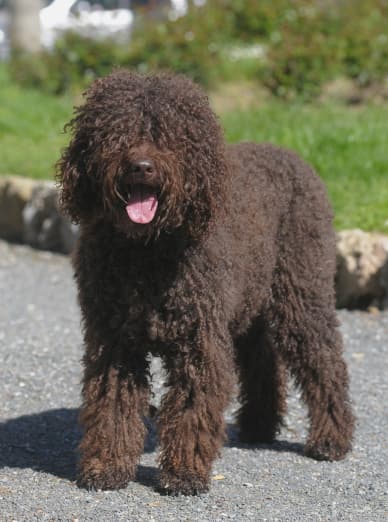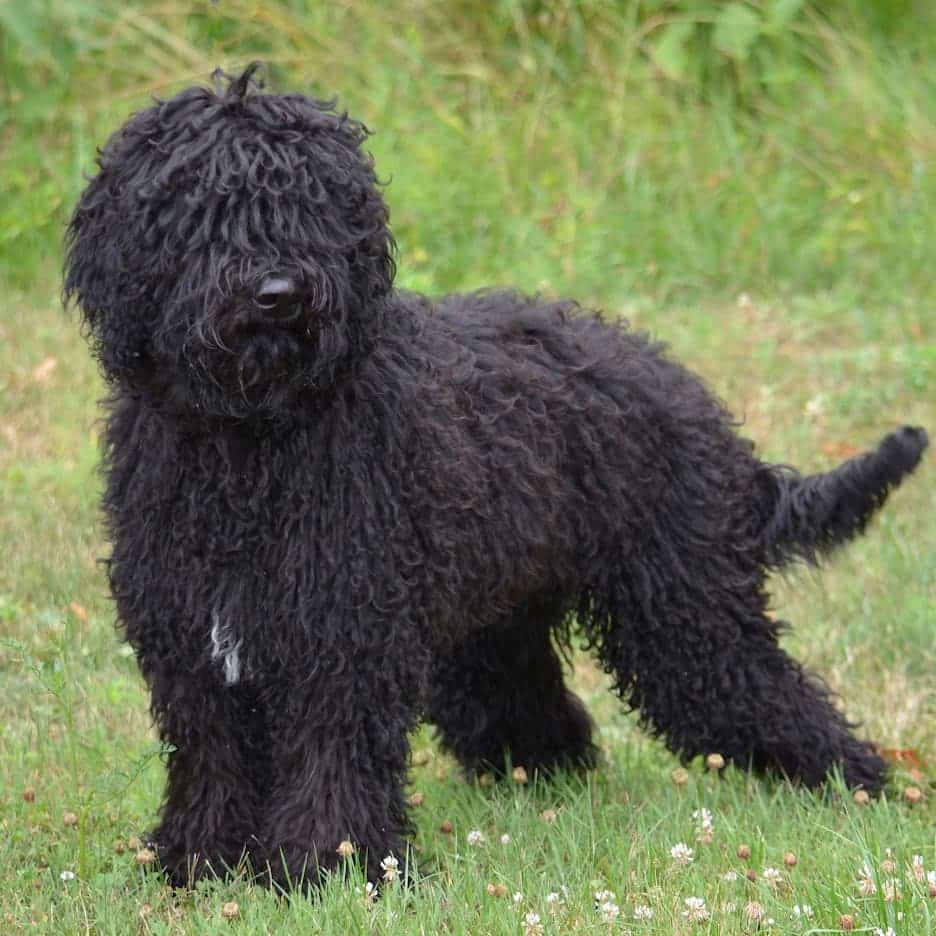The Barbet Dog breed is Friendly, Bright and Cheerful
The Barbet dog breed is also known as the French Water Dog. They are quite rare, and the first one to arrive in the UK was in 2001. This is a medium size dog with a dense curly coat from head (including a beard) to toe. As a water dog they were used to locate, flush out and retrieve water birds. The breed was recognized by the UK Kennel Club in 2018.

Barbet Dog – Temperament
The Barbet is intelligent and quick to learn. They are very good in a family, especially with children and the elderly. They form strong bonds with their family, and prefer being in the same room as family members. They do not enjoy being left alone outside, or even indoors but in a different room to the family.
As a water dog, the Barbet is a strong swimmer, and they will almost always dive into any water that they come across. With a retrieving background they love to chase things, such as a ball or a frisbee. A large backyard is ideal for letting off steam, and best of all is getting out into the countryside for a good romp.

Barbet Dog – Breed History
The oldest references to the Barbet are in 16th century scripts. They were used as water dogs to flush out game birds and retrieve the shot birds from the water. At that time, there were very similar breeds in Italy (the Barbone) and Germany (the Pudel or Poodle), and they were considered to be essentially the same breed.
As the centuries passed, the Barbet dog or French Water Dog became distinct from the other breeds. Although originally a water dog, the Barbet was also used as a general hunting dog and gun dog.
The breed was involved in the development or several other breeds, such as the Newfoundland. Despite being a popular choice to improve the abilities of other breeds, the Barbet was almost extinct after World War 2. There were only 2 breeders working in France to keep it going in the following decades.
The modern-day Barbet dog is still used for hunting, where it’s ability to detect game birds and indicate their location by ‘pointing’ (the only water dog breed that can ‘point’) is highly valued by hunters. It gives them an opportunity to prepare, before giving the command to the dog to flush out the birds.
Vital Statistics
Height; 19 to 24 inches at the withers
Weight; 35lbs to 65lbs
Life span; 12 to 14 years.
Color; Black, Black-and-White, or Brown.
Ease of Training
This is an intelligent dog, alert and willing to learn. They are relatively easy to train, and do well in obedience tests and competitions.
As always, it is important to socialize your puppy from an early age, to get them used to sights and sounds around the neighbohood, outdoors, with strangers both human and animal. Basic training such as house breaking should also start early.
From around 6 months old you can start with more training, keeping sessions short and using positive reinforcement. The Barbet loves to play, and making a game out of training will speed things up.
We have a great page on the best dog training books, which you can visit by clicking HERE.

Protection
The Barbet is a friendly and amiable breed, and is more likely to welcome strangers than to bark, although it depends on the circumstances and the individual dog. While their qualities as a watchdog are debatable, they are definitely not good guard dogs.
Their breeding heritage simply did not involve any guarding or protection duties, and they do not have the attitude needed to be effective guard dogs. If you are looking for a dog to give you protection, I recommend looking for another breed.
Grooming
With a long, dense, shaggy waterproof coat, the Barbet requires a fair amount of grooming to keep it healthy and looking good. This depends on the lifestyle your Barbet enjoys – at one extreme domesticated and part of a family, playing in the garden; and at the other extreme spending a lot of time each day out in the countryside, getting wet and muddy.
The good news is that the Barbet is a low to non-shedding breed, and can also be considered a non-allergic dog breed. However they will always need daily brushing to prevent their shaggy coat from matting. If you brush the dog every day, then matting doesn’t have a chance to build up, and so the chore doesn’t take long.
A lot of owners will trim the coat to 3 – 5 inches long, to keep the dog looking neater and reducing grooming time. This is best done in the following order;
- A full brush through and combing
- A bath
- A blow-dry to straighten the hair
- Trimming to the desired length.

Health Considerations
Because this is a relatively rare breed, with a limited gene pool, the Barbet does tend to suffer from a number of genetic issues, but not to the degree of some other breeds.
- Hip dysplasia
- Elbow dysplasia
- Progressive retinal atrophy
- Seizure disorders
- Allergies.
Famous Barbet Dogs
It is believed Bob Dylan might have had a Barbet named Hamlet back in the 60s that he gave to the Band when they were living in big pink. Although this is unverified, looking at the pictures of Hamlet, he does look like a Barbet!
If anyone has information about this, do use the Contact Me link to add to this story.





